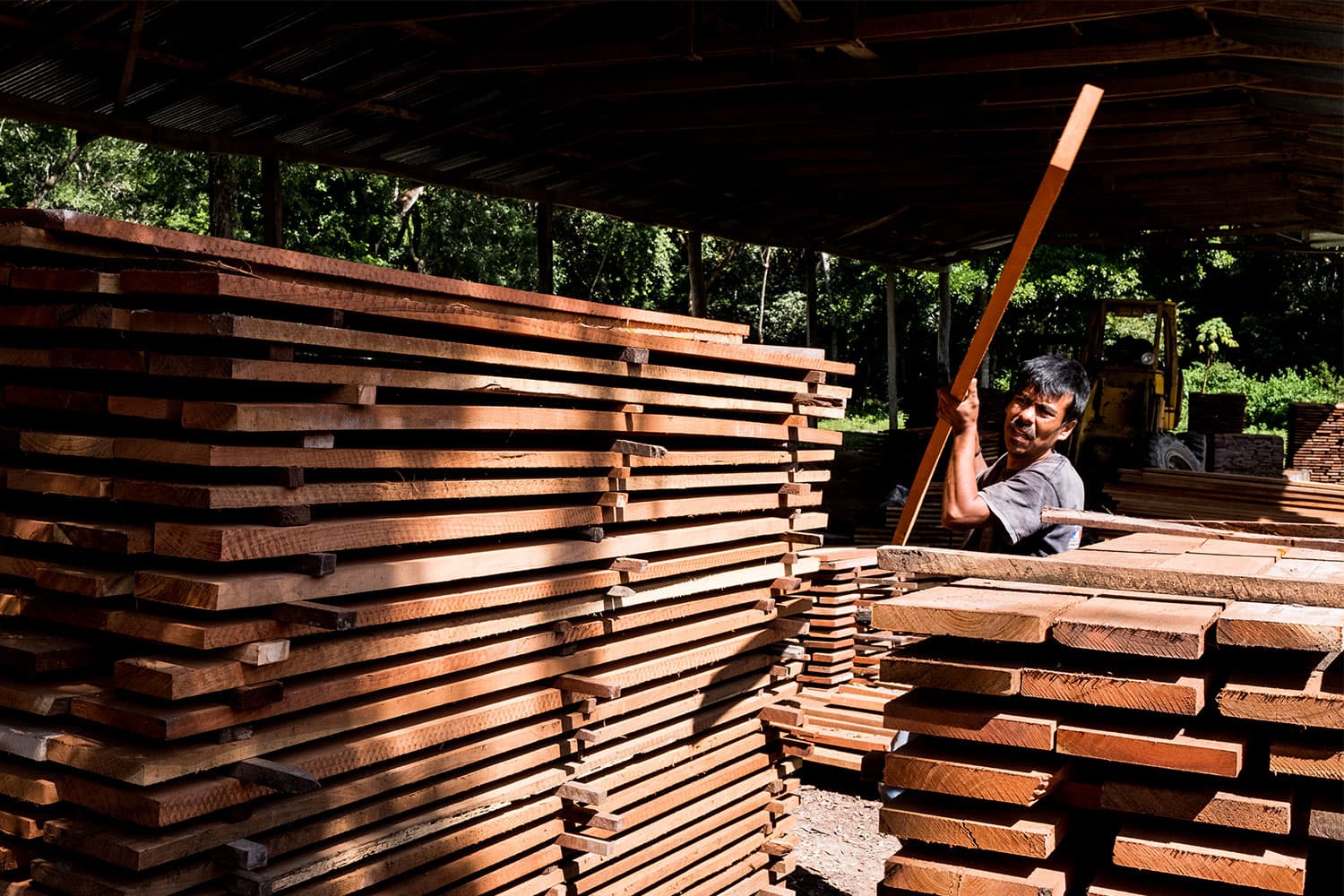Cutting into the Controversial World of Forest Certification
Know Logo helps you navigate today’s greenwashed marketplace, one eco-label at a time. Next up: FSC and SFI.
A stack of lumber from an FSC-certified forest in Uaxactun, Guatemala.
Ever notice a little green logo stamped on a package of paper or stack of plywood? These labels promise sustainable and ethical wood products — but are they all bark and no bite?
Forests are disappearing at an alarming rate. Roughly 10% of the world’s forests have vanished since 2000, including some 411 million hectares between 2001 and 2020, according to nonprofit consortium Global Forest Watch. In 2019, a football-field-sized swathe of tropical rainforest disappeared every six seconds.
Researchers and environmentalists agree that certifications for sustainable forest management could be part of the solution. In North America, the major certifiers are the Forest Stewardship Council (FSC) and Sustainable Forestry Initiative (SFI). Here’s how they compare.
The Forest Stewardship Council
After the 1992 UN Earth Summit in Rio de Janeiro failed to produce a binding agreement to stop deforestation, disgruntled environmentalists, Indigenous groups, and timber-industry stakeholders united to address the issue. One year later, FSC was born.
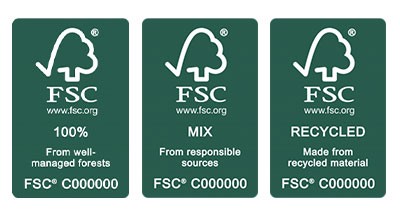
Its mission, according to François Dufresne, CEO of FSC Canada, is to use a market-powered system to halt deforestation, promote sustainable forest management, and protect workers and Indigenous communities. Companies that meet FSC’s sustainability standards and undergo routine audits are granted permission to stamp FSC’s logo on their products, for a fee. The idea was to encourage sustainability by making it profitable, on the understanding customers would pay more for certified products. And, for some companies, it worked.
Today, FSC has certified over 229 million hectares of forest in 89 countries — about the size of Saudi Arabia — and is probably the most prominent forest management certifier in the world. Its labels aren’t restricted to timber, but cover all forest products, from mushrooms to natural latex.
The Sustainable Forestry Initiative
SFI was launched two years after FSC. It was originally a voluntary code of conduct for members of the American Forest and Paper Association (AF&PA), a US trade association. Today, SFI is a recognized certification system operating in the US and Canada. Even so, by 2020, SFI had certified over 150 million hectares of forest, an area slightly smaller than Mongolia.
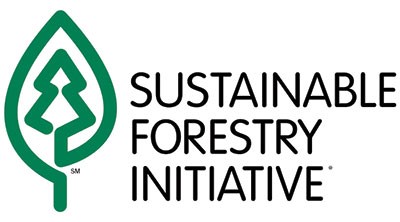
According to Jason Metnick, a senior vice president at SFI, the organization is dedicated not only to developing forest management standards and promoting conservation, but to improving communities, Indigenous relations, and sustainable forestry education.
Know your label
FSC’s checkmark-tree logo comes in three versions: FSC 100%, when all a product’s materials come from certified forests; FSC Recycled for products made entirely from recycled goods; and FSC Mix, for products containing both certified new and recycled material.
In order to use both certifiers’ labels, companies must undergo a strict application process and pay membership fees, as well as pass an audit by an independent organization, like the Canadian Standards Association. Using third-party certification bodies is important for eco-labels’ legitimacy, because it means the certification authority — which stands to receive fees from certified companies — doesn’t decide who gets approved.
What are their standards?
FSC lists its expectations in 10 principles and 57 criteria, which range from respecting Indigenous peoples’ rights, to implementing a clear forest management plan, and more. Likewise, SFI’s standards detail strict rules meant to “protect water quality, biodiversity, wildlife habitat, species at risk and forests with exceptional conservation value,” according to its website. Both FSC and SFI prioritize “high conservation value” forests — regions with significant biological, social, cultural, or ecological importance.
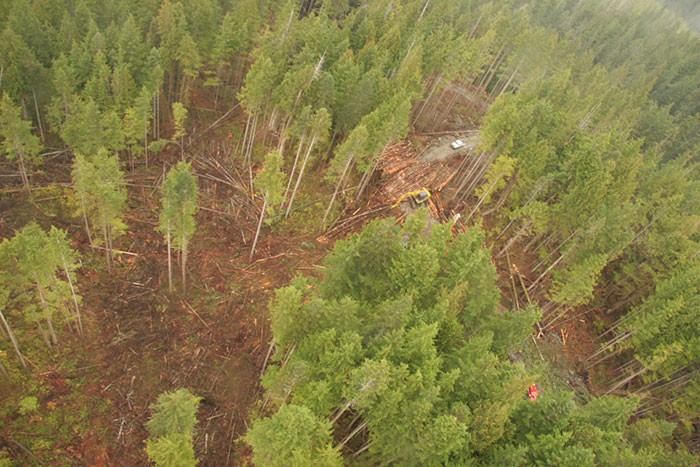
An FSC-certified cutblock near Clayoquot Sound on Vancouver Island.
In an upcoming update, SFI will focus on adjusting forest management techniques to mitigate the effects of climate change and improve forests’ abilities to capture atmospheric carbon, according to an April 2021 news release. It will also introduce a new objective focused on minimizing the impacts of forest fires.
Meanwhile, FSC has just adopted a new, Canada-specific standard with a focus on protecting the habitats of endangered boreal woodland caribou.
How are they different?
Although FSC and SFI began as different systems, over time their standards have grown similar, until the difference “could even be imperceptible to some people,” said Dr. John Innes, a professor of forestry at the University of British Columbia.
Any differences stem from their fundamental philosophies, Innes said: “The FSC is more ecologically oriented, whereas the SFI is more production oriented.” In other words, he said, SFI might make decisions to benefit industry at the expense of the environment, within limits.
For example, Innes said SFI is more permissive of clearcuts. Meanwhile, FSC discourages clearcuts, preferring single-tree harvesting. However, FSC does allow clearcuts in certain countries like Canada, Sweden, and Russia, with limits based on the area’s importance for biodiversity, culture, and other values. There, clearcuts help thin forests as wildfires do naturally, FSC’s Director General Kim Carstensen wrote in 2014.
How are they funded?
In the past, SFI faced criticism for receiving a majority of its funding from the paper and timber industries. However, Metnick asserted that the organization today is a far cry from its origins. In 2007, the certification program fully separated from AF&PA and became an independent nonprofit. Now it runs mostly on fees charged to SFI-certified companies.
SFI might make decisions to benefit industry at the expense of the environment.
According to its 2020 annual report, those fees comprised 79% of SFI’s revenue. The remaining 21% came from “annual conference revenue, service agreements, investment income and other sources.”
Meanwhile, “annual administration fees” made up 82% of FSC’s total income in 2020, according to its annual financial statement. These are fees charged to affiliated accredited certification bodies, which perform third-party audits. The remainder came from certified company membership fees, donations, and more.
Indigenous relations
Another major difference, according to FSC Canada’s Dufresne, is that FSC requires companies to obtain free, prior, and informed consent from Indigenous people before sourcing from any land they own, occupy, or use — unlike SFI.
When told about Dufresne’s statement, SFI’s Metnick pointed to the initiative’s partnerships with over 120 Indigenous communities. According to its new standards, SFI requires companies to be aware of traditional forest-based knowledge, such as “known cultural heritage sites, the use of wood in traditional buildings and crafts, and flora that may be used in cultural practices for food, ceremonies, or medicine.”
“We don’t just address building meaningful relationships and respecting rights [of Indigenous peoples],” Metnick said. “We’re building communities and creating green jobs in Indigenous communities.”
Dufresne noted: “It’s one thing to encourage collaboration, but to have mandatory features to make it happen is a world of difference.”
Are certifications helping?
Despite deforestation prevention being a central motivation for both certifications, multiple studies show they’ve made little impact on deforestation worldwide. A 2018 study by US nonprofit Resources for the Future found no evidence that FSC certification reduced deforestation in Mexico, a country host to both “considerable FSC certification and deforestation.”
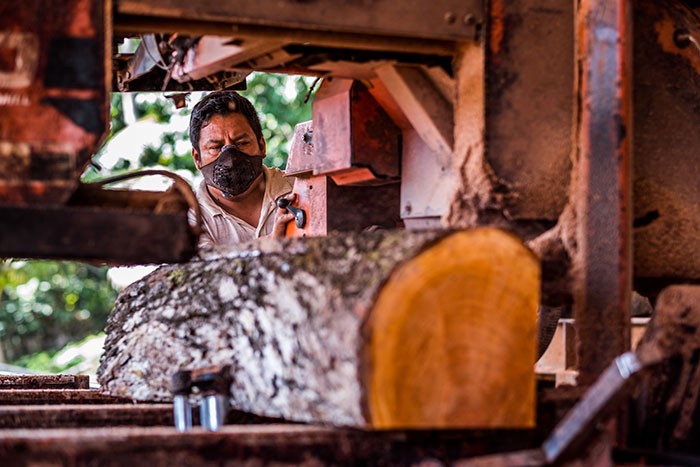
The authors speculated this was either because FSC certification resulted in minor improvements rather than dramatic results, or that certification had more substantial impacts on forest degradation — a factor the researchers didn’t measure — rather than deforestation.
FSC’s Dufresne believes his organization does prevent deforestation in certified areas, but that the result is outweighed by deforestation in largely uncertified regions. “It’s very difficult as a voluntary system to increase our footprint in those parts of the world where deforestation is, unfortunately, a big deal,” he said.
UBC’s Innes said while certifications haven’t slowed deforestation, they do provide other benefits, like “new techniques, new methods, new data that is now being collected to actually support forest management.”
Illegal logging and enforcement
Illegal logging has taken place within forests certified by both systems. Undercover investigations by the Environmental Investigation Agency, a Washington, DC-based nonprofit, connected FSC-certified companies to illegal logging in countries including Peru and Romania; in the latter two cases, FSC revoked the companies’ certifications after the reports became public.
Likewise, Plum Creek, an SFI-certified logging company, faced 11 civil penalties in five years from Oregon’s forestry department, following numerous clearcutting offenses. In 2014, environmental think tank Centre for Sustainable Economy filed a formal complaint with SFI asking to revoke Plum Creek’s certification.
An SFI-affiliated third-party organization — the same one that had audited Plum Creek since 2009, according to environmental group Sierra Club — audited the company, and concluded there was “insufficient evidence” that Plum Creek’s actions were “either negligent or willful” and cause for suspension. The following year, Plum Creek CEO Rick Holley received an award from SFI. Holley also served twice as chair of SFI’s board.
Illegal logging has taken place within forests certified by both FSC and SFI, including in Peru, Romania, and Oregon.
“Nobody has ever lost an SFI certificate,” said Shane Moffatt, a Greenpeace Canada campaigner. “I think that gives you a comparative sense of the relative rigor of those two systems.”
SFI’s Metnick accused Moffatt of making a semantic argument. Non-compliant companies can’t lose their certification because they won’t get a certificate in the first place, he said. “It’s not like we’re taking a certificate away… because at the end of the day you just don’t get a certificate if you don’t pass the audit.” He added that SFI is not directly responsible for whether companies pass their audits — that’s up to the third-party auditors. Metnick did not confirm whether SFI had ever revoked any company’s certificate.
Environmental criticisms
Both certifications have also received flak from environmental organizations. In 2018, Greenpeace International (GI) withdrew its membership from FSC, despite being a founding member.
“FSC is not consistently applied across regions, especially where there’s weak governance,” GI stated in a press release, adding that before it can endorse the certification, FSC needs to be more transparent about where certified areas’ boundaries are, and allow external monitoring.
Greenpeace Canada remains a member of FSC, though. “It addresses some of the critical challenges in Canadian forests at the moment,” said Moffatt, such as protecting woodland caribou. “It has much more robust ecological requirements [than SFI] when it comes to species protections, and very clearly requires free, prior, and informed consent of Indigenous peoples.”
Meanwhile, since 2011, a consortium of more than 25 environmental groups (including Greenpeace, Stand.Earth, and the Sierra Club) have released statements rejecting SFI over its stance on clearcuts, lack of mandatory Indigenous consultation, and activity in endangered forests. They’ve been joined by 38 major US companies — including Office Depot and AT&T — who agreed not to use SFI-certified products for these reasons.
Bottom line
When asked which certification he preferred, Greenpeace’s Moffatt was quick to reply.
“This leopard hasn’t changed its spots,” he said of SFI. “They may have changed in some way since their original founding, but have they improved to an extent that they offer any guarantees of social responsibility or sustainability? In Greenpeace’s opinion, absolutely not.”
“On the other hand, the FSC has accomplished a lot of good over the years,” he added.
UBC’s Innes gave a more moderate response: “I would recommend either,” he said. “I think they’ve done a lot of good and I think they will continue to do lots of good.”
Buzzword summary
FSC’s rigor beats SFI’s industry focus. Neither is controversy-free, but certification by either is better than none at all.
Print Issue: Fall/Winter 2021
Print Title: Fact or Pulp Fiction?
